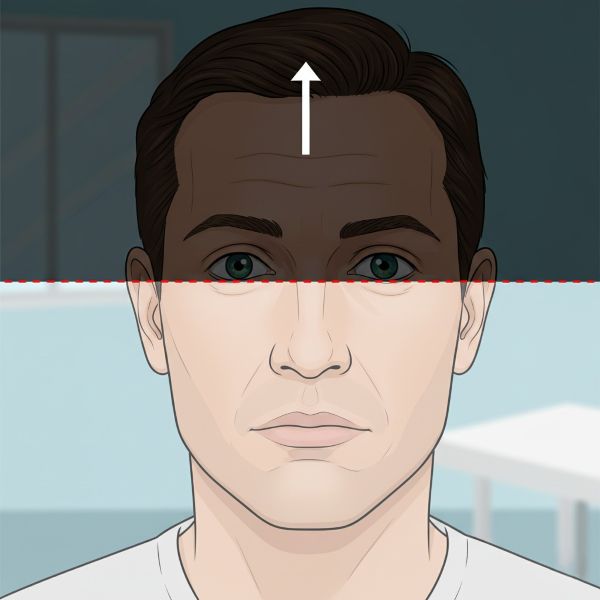Altitudinal Field Defect
Definition and Clinical Features
An altitudinal visual field defect is a type of horizontal hemianopia, meaning there is vision loss in the upper or lower half of the visual field. A key feature is that the defect respects the horizontal meridian, stopping abruptly at the horizontal midline.

An example of a superior altitudinal field defect, where the upper half of the visual field is lost. This pattern respects the horizontal meridian.
Causes and Anatomical Correlates
Altitudinal defects can be monocular or bilateral, which helps to localize the underlying lesion.
- Monocular Defects: A defect in one eye points to a lesion in the eye or optic nerve (pre-chiasmal). They are characteristic of vascular events affecting the retina. Central vision may be preserved (macula sparing) if the cilioretinal arteries provide a separate blood supply to the macula. Common causes include:
- Central retinal artery occlusion (CRAO)
- Anterior ischemic optic neuropathy (AION)
- Retinal detachment
- Glaucoma
- Chronic atrophic papilledema
- Bilateral Defects: Defects in both eyes typically indicate a post-chiasmal lesion. The most common cause is bilateral damage to the occipital lobes affecting the visual cortex either above (for inferior defects) or below (for superior defects) the calcarine fissure. This can occur from sequential strokes or a single event affecting both posterior cerebral arteries.
Cross References
Hemianopia; Macula sparing, Macula splitting; Quadrantanopia; Visual field defects

